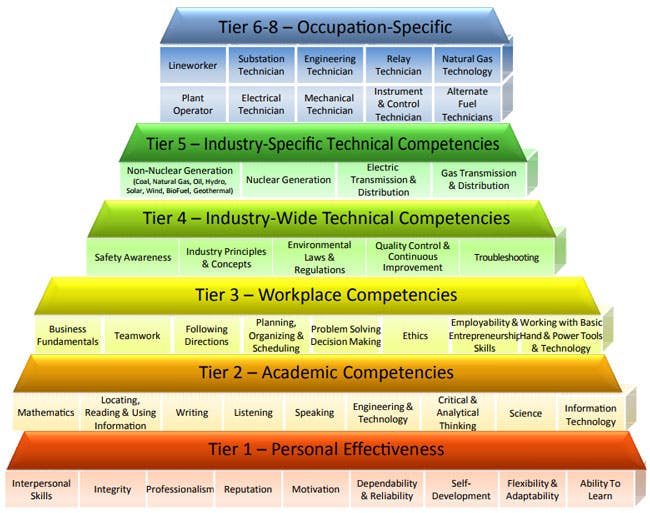
Baby boomers exit electric utility workforce as new technologies emerge: solutions for filling the skills gap
According to a 2015 workforce survey by the American Public Power Association (APPA), 55 percent of electric utilities reported that within five years at least 20 percent of their workforce will be eligible for retirement. [1] With the mass exodus of retirement age utility workers in sight, it’s time for your municipal utility or investor-owned utility (IOU) to prepare to maintain a workforce with the technical expertise and specialized skills to continue daily business operations.
On the heels of this transition, looms the necessity for your utility to take steps to transform into the “utility of the future” – an entity that among many initiatives must rethink traditional electric generation models and integrate alternative generation technologies.
Now consider if the employee recruitment and retention challenges common within your electric utility peers sound familiar:
- Aging workforce – As much as you’d like your experienced workers to happily work for your utility forever, they have other plans – i.e. retiring so they can travel the world or move closer to grandkids.
- Small qualified candidate pool – Technical expertise requires advance education and training. There’s more demand than supply for these highly qualified utility workers.
- Geography – Younger candidates may have their sights set on jobs and life in the big city instead of putting down roots in a smaller community.
- Lean utility operations – Operations have always run on thin margins. Stepping up staff recruitment, on-the-job training programs and technology investments are now really stretching time and monetary resources at a time when traditional electric generation models alone may not be paying the bills.
- Employee retention – The source of your workforce stability and institutional knowledge retention is retiring. Younger workers may not understand growth opportunities exist with your utility and therefore may plan to spend only a few years with you before seeking career advancement elsewhere.
Nodding your head? We thought so. Putting it all together, here’s what today – and tomorrow’s – public power utilities and IOUs are being asked to do: Recruit new workers with advanced skillsets into the utility industry to operate new and continually evolving technologies. And enrich the skillsets of the existing workforce. At the same time.
You probably aren’t the first to think powering down your whole operation is the only viable option — that you and your former utility customers will be just fine reading by candlelight and cooking and warming yourselves over an open fire.
Wait! As will the fire, that thought will quickly cool. Yes, overcoming recruitment and retention barriers amid mass retirements and a changing technological landscape does produce a steep list of simultaneous action items. But it is doable.
Take a stand now and affirm workforce development and succession planning as one of your utility’s very top priorities. Commit to this cyclical process during which you identify current and future staffing, training and knowledge transfer needs. By prioritizing workforce development and succession planning, your IOU or community owned utility will:
- Conduct predictive studies on critical organizational needs
- Analyze and adjust programs, training and recruitment
- Craft and roll out new systems to retain institutional knowledge
- Develop and implement on the job training for new workers and apprentices for knowledge transfer
A key component to workforce development and succession planning is identifying the core competencies your employees need to be successful in their jobs. Thanks to the Center for Energy Workforce Development, a not-for-profit consortium of energy and utility companies and associations, a core competency model featuring eight competency tiers has been developed [2]:
Tier 1 – Personal effectiveness
Tier 2 – Academic competencies
Tier 3 – Workplace competencies
Tier 4 – Industry-specific technical competencies
Tier 5 – Industry-wide technical competencies
Tier 6–8 – Occupation-specific competencies
Energy industry competency model2

As workers retire and your utility needs to fill the gap, strive to find an individual that meets the required competencies of the position. With only a small pool of candidates available, you may need to provide more on-the-job training and knowledge transfer to existing employees before retirements occur. In addition, consider outsourcing or using third-party providers with the appropriate expertise to help fill the gap in the short term.
By implementing a workforce and succession planning program within your municipal electric utility or IOU, you’ll enjoy receiving postcards from afar from your retirees, ensure technical skillsets and on-the-job training needs match the times, encourage younger workers to envision a path for growth within your organization, and your utility – the utility of the future – and the community it serves will continue to thrive.
For more information on this topic, or to learn how Baker Tilly energy and utility specialists can help, contact our team.
[1] "APPA survey indicates public power utilities need to do more in area of workforce planning,” American Public Power Association, 2015.
[2] "Energy industry competency model: generation, transmission and distribution," The Center for Energy Workforce Development, 2014.
